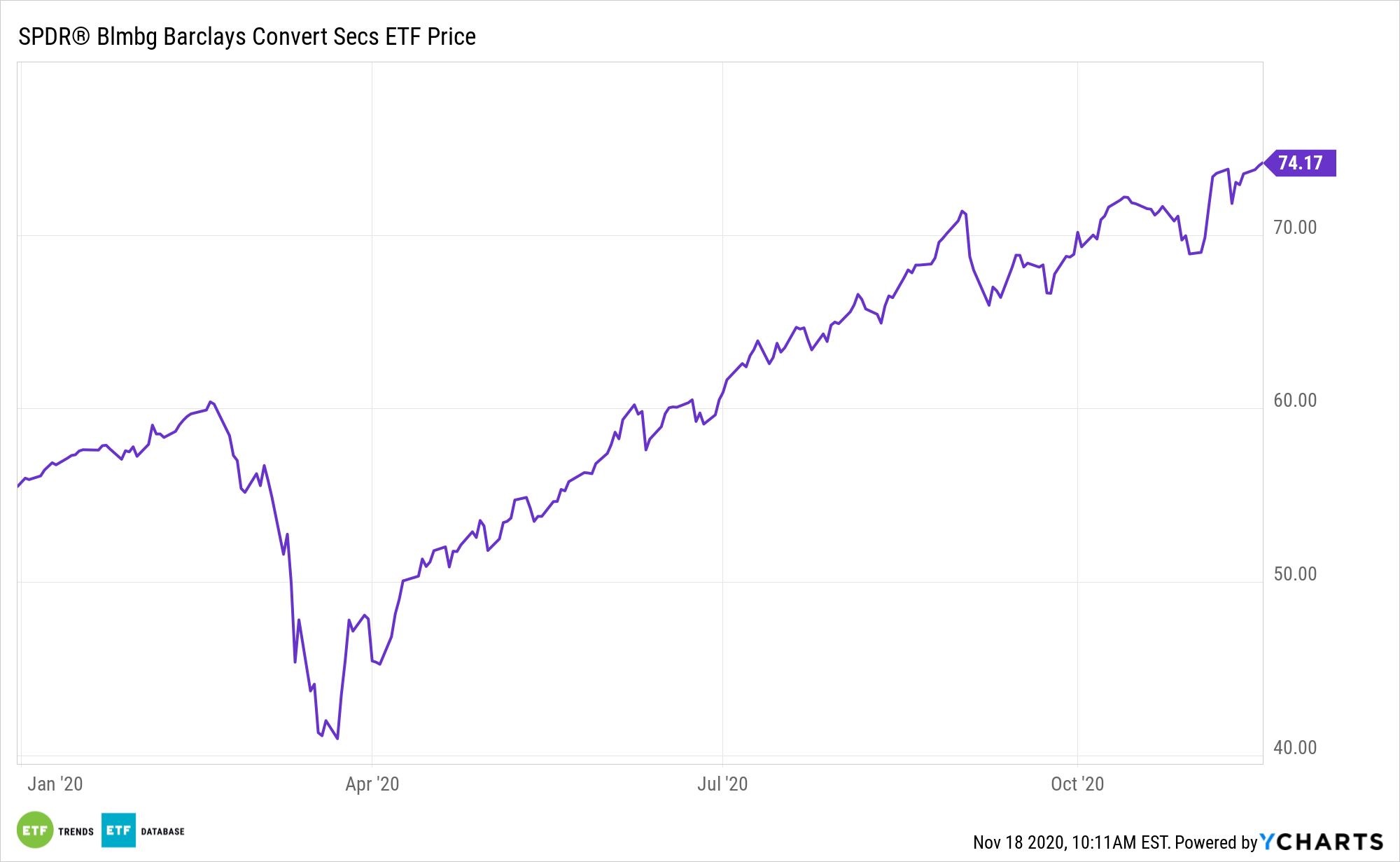With yields on safer fixed income assets paltry and equities forecast to continue rising, convertible bonds and the SPDR Barclays Convertible Securities ETF (NYSEArca: CWB) are valid ideas for income.

Convertible bonds are a type of hybrid fixed-coupon security that allows the holder the option to swap the bond security for common or preferred stock at a specified strike price. Due to the bond’s equity option, convertible bonds typically pay less interest than traditional corporate bonds. The fund, though, does not convert its holdings into shares, but investors are exposed to the equity premium due to the way the bonds are priced.
“Convertible bonds can be an attractive option for investors looking to supplement their income needs without sacrificing growth opportunities,” writes Morningstar analyst Zachary Patzik. “These hybrid securities incorporate both bond and equity features. They have an embedded call option that provides the holder the right to convert the bond into common stock of the issuing firm at a predetermined (conversion) price. But if the stock price tumbles, the convertible’s interest and principal payments help limit losses.”
Cozy Up to CWB?
Convertible bonds are seen as a middle ground between stocks and bonds. The securities pay lower coupons than regular unsecured debt securities, but they can also make up the difference if the company’s shares continue to appreciate. Due to onerous regulations, CWB is a preferred avenue to convertibles for many investors. Its fixed income assets are better-correlated to stocks.
“The traditional correlation patterns for convertible bonds have held fast even with these more recent industry shifts. The ICE Bank of America Merrill Lynch All U.S. Convertibles Index exhibited 89% and 13% correlations with the S&P 500 and Bloomberg Barclays U.S. Aggregate Bond Index, respectively, over the trailing 15 years ended October 2020. Those correlations were similar over the past three years,” according to Patzik.
Other CWB advantages include convertibles’ status as one the top-performing bonds when rates rise. Its expense ratio of just 0.4% is more than 70 basis points below the average actively managed a convertible bond mutual fund. Long-term data indicate convertibles have actually outpaced stocks. Plus, convertibles perform less poorly in down markets for equities.
“Convertibles have held up better than large-cap equities during other challenging markets. For example, the convertible category fell by 30% on average during the great financial crisis while the large-blend equity category sank to greater depths with a 41% loss,” according to Morningstar.
For more on multi-asset strategies, visit our Multi-Asset Channel.
The opinions and forecasts expressed herein are solely those of Tom Lydon, and may not actually come to pass. Information on this site should not be used or construed as an offer to sell, a solicitation of an offer to buy, or a recommendation for any product.

